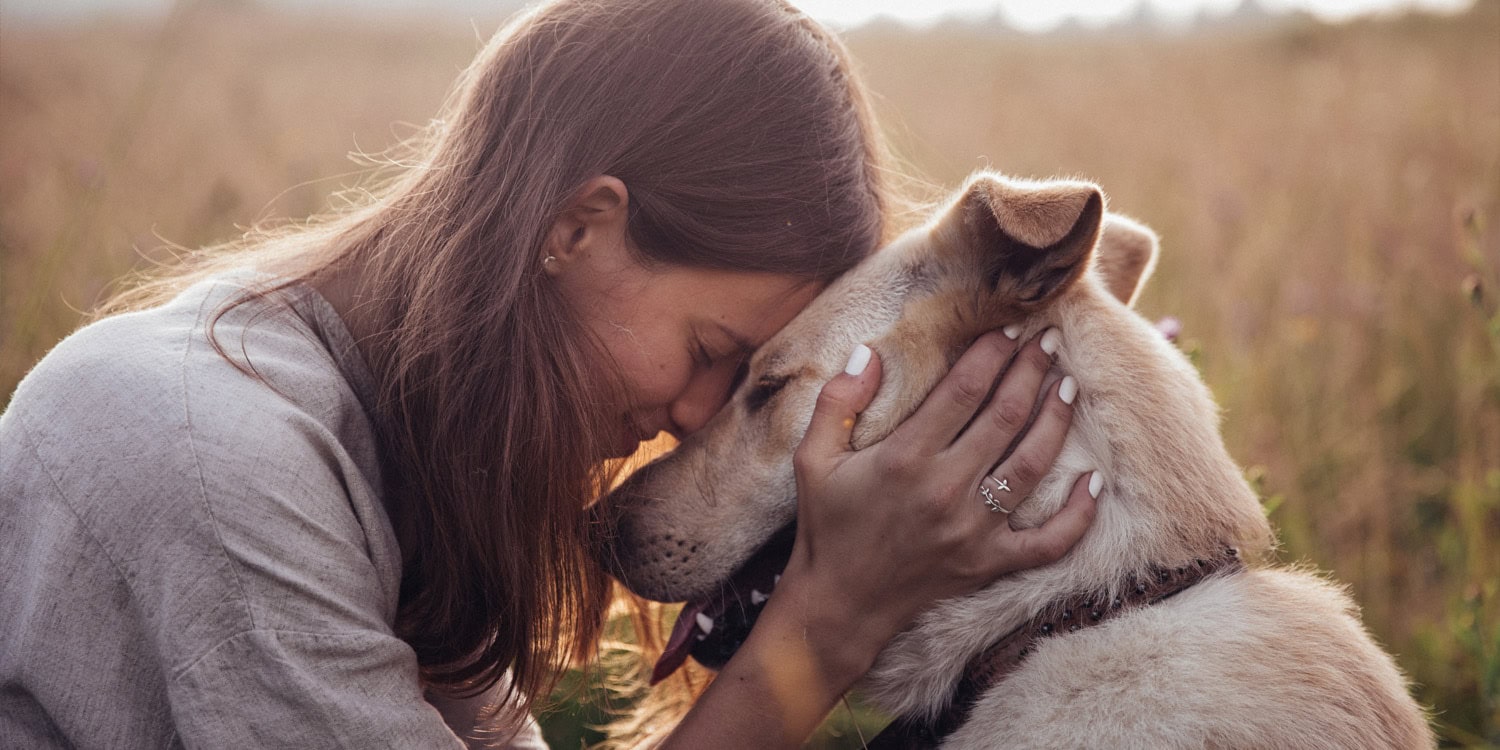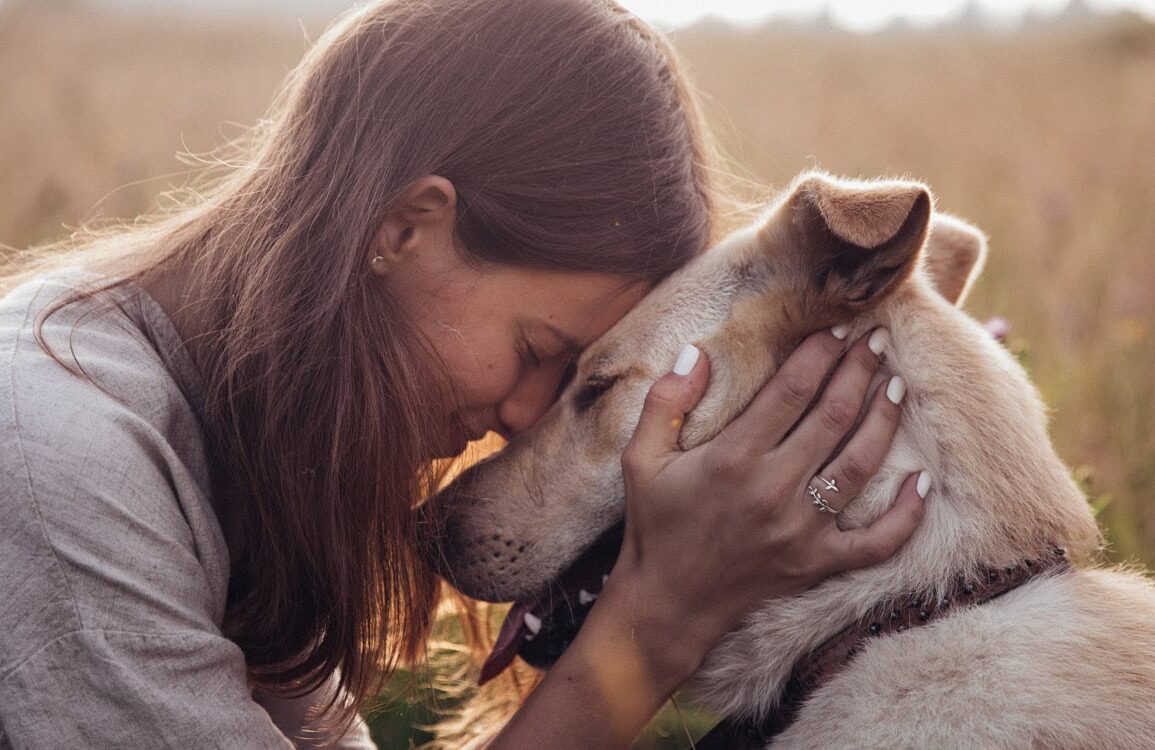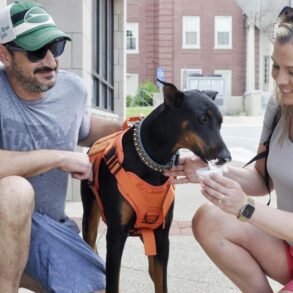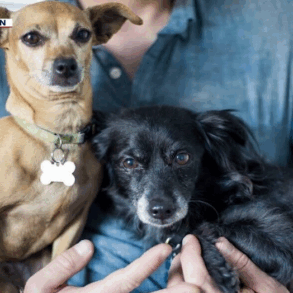
Researchers have uncovered new insights into the relationship between dogs and their owners. A study published in Scientific Reports has found that a dog’s heart rate variability adapts to its owner’s heart rate variability during interaction. This physiological “co-modulation” suggests that emotional states are shared between dogs and their owners, offering new understanding of the deep bond shared between the two species.
The relationship between dogs and humans has evolved over thousands of years, creating bonds akin to those between human caregivers and children. Researchers sought to explore whether these bonds are reflected in shared physiological states, such as heart rate variability, which indicates the balance between relaxation and arousal in the autonomic nervous system.
While prior studies examined behavioral and hormonal synchronization between dogs and humans, little was known about their physiological synchrony. By investigating this co-modulation, the researchers hoped to provide a clearer picture of the emotional and physiological connections that underpin the human-dog bond.
“I have always been fascinated by human-animal relationships and the close attachment bonds we can form with non-human animals, both from personal experience and from a scientific perspective. The dog-human relationship is particularly intriguing because the domestication of dogs has resulted in their remarkable sensitivity and ability to interpret human gestures and emotions,” said study author Aija Koskela, a researcher at the University of Helsinki and University of Jyväskylä
The study included 25 dog-owner pairs, focusing on cooperative dog breeds such as retrievers and herding dogs, which are known for their sensitivity to human cues. Dogs and their owners were recruited through social media and a cognitive testing company. Exclusion criteria for participants ensured that neither dogs nor owners had health conditions or behaviors that could interfere with the study’s measures. The owners, mostly women aged 40.8 years on average, lived with their dogs as indoor pets, and most of the dogs had been trained in dog sports like agility or obedience.
In a controlled environment, researchers attached heart rate monitors to both dogs and owners to measure heart rate variability. The pairs participated in six different tasks designed to mimic natural interactions, such as playing, stroking, training, and sniffing. These activities varied in physical intensity to distinguish the effects of emotional arousal from physical activity. Heart rate variability data was collected and analyzed alongside measures of physical activity using synchronized monitors.
Owners also completed questionnaires to assess their temperament and the quality of their relationship with their dogs. These tools allowed researchers to investigate how individual differences in personality and emotional closeness influenced the physiological responses of both dogs and owners.
The researchers found that dogs’ heart rate variability and activity levels were closely linked to their owners’. During periods of rest and calm interaction, such as before and after structured tasks, dogs and owners showed significant co-modulation in heart rate variability. This suggests a shared emotional arousal, likely influenced by the strong bond between the pairs. During more physically demanding activities like playing, the correlation between the pairs’ physical activity was stronger, but heart rate variability remained influenced by the shared emotional context.
“I believe this study confirms that the emotional mechanisms underlying dog-human interactions are similar to those in human attachment relationships, where emotions are shared and transmitted between attachment figures,” Koskela told PsyPost. “From a practical standpoint, I think it’s helpful for dog owners to remember that their emotions can greatly influence their dog’s behavior. We often focus so much on the dog’s actions that we overlook the emotional state driving them, or how our own feelings influence our dog.”
“For example, trying to calm a child while feeling upset yourself often doesn’t work—whereas calming yourself first helps the child feel secure. Likewise, dogs are highly attuned to human emotions. Being mindful of your emotional state can make challenging situations easier for both you and your dog.”
Interestingly, several factors shaped these physiological connections. For example, the dog’s heart rate variability was influenced by its size, the duration of its relationship with its owner, and the level of shared activities reported by the owner. Larger dogs and those living with their owners for a longer time tended to have lower heart rate variability, suggesting greater arousal or excitement during the tasks. Owners who scored higher on measures of negative affectivity (a tendency toward experiencing negative emotions) had dogs with higher heart rate variability.
Notably, the physiological synchronization between dogs and owners occurred only within the established pairs. When researchers randomly matched dogs with non-owners, this connection disappeared, confirming that the bond between a dog and its owner uniquely facilitates this co-modulation.
“Quite a few things surprised us,” Koskela said. “First, it was fascinating to observe that the emotional connection between dogs and their owners could be detected at physiological level over a relatively short time—the study lasted just an hour. Previously, emotional synchronization between dogs and owners has been studied at hormonal level over much longer time periods. Our study shows that this emotional connection can be detected in a very short time period and I think it’s amazing.”
“Second, it was surprising that the dog’s physiological state measured as heart rate variability explained the owner’s heart rate variability more than the other factors generally affecting the heart rate variability like age or weight. Lastly, I find it interesting that dogs belonging to owners with higher levels of negative affectivity, one of the four temperament traits, were more relaxed throughout the study. This could be because such owners often form very close emotional bonds with their dogs, offering also emotional support for the dog.”
The study highlights the physiological connection between dogs and their owners, suggesting that emotional and autonomic states are interlinked during interaction. However, there are some limitations to consider.
“The current study was limited by its relatively small sample size,” Koskela noted. “However, statistical analysis confirmed the reliability of the findings. Our sample also primarily consisted of female dog owners, which is noteworthy since an owner’s gender may influence both dog behavior and physiology. Furthermore, the sample likely reflects a bias toward active and committed dog owners, as most of the participants practiced dog sports and volunteered for the study in their free time without monetary compensation. Therefore, it is plausible that dog-owner dyads with more functional relationships than average are overrepresented in this study.”
Looking forward, Koskela said that she is “interested in studying emotional synchrony between dogs and their owners in greater detail, particularly on a moment-to-moment level and the factors that modulate it (e.g., personality traits or time lived together). More broadly, I aim to identify the factors associated with functional dog-owner relationships.”
“It’s noteworthy that we studied only cooperative breeds, which are known to be especially sensitive to human behavior and emotions. It would be fascinating to study more ancient breeds to determine whether their emotional states are similarly modulated by their owners.”
The study, “Behavioral and emotional co-modulation during dog–owner interaction measured by heart rate variability and activity,” was authored by Aija Koskela, Heini Törnqvist, Sanni Somppi, Katriina Tiira, Virpi-Liisa Kykyri, Laura Hänninen, Jan Kujala, Miho Nagasawa, Takefumi Kikusui, and Miiamaaria V. Kujala.
This post was originally published on this site be sure to check out more of their content.













































